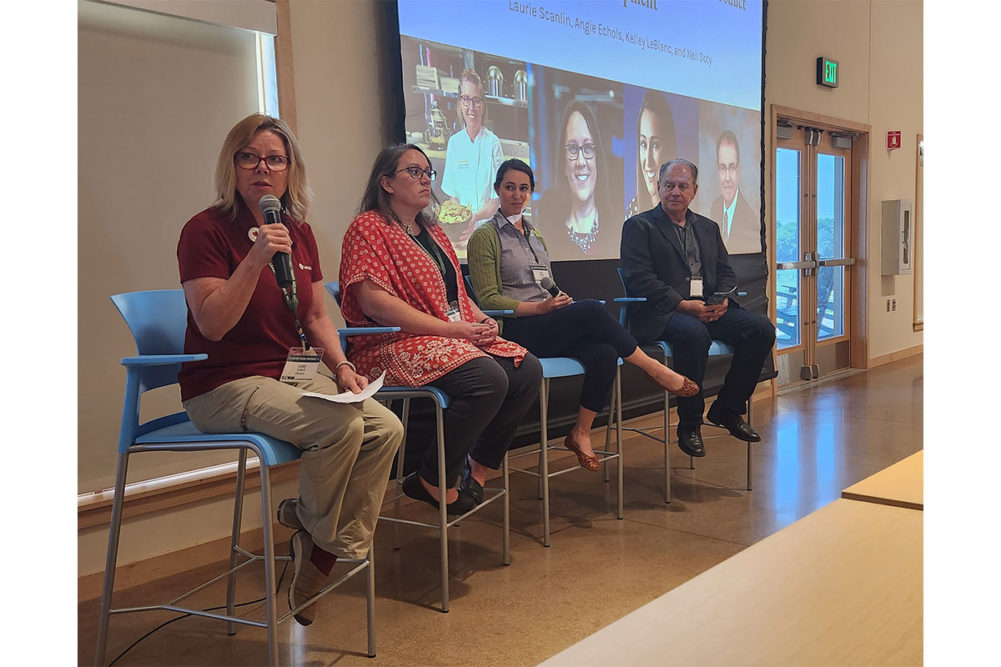ELK RIVER, MINN. — Ancient grains have gone mainstream, bringing along a greater need for efficient distribution, prevention of commingling and consumer promotions. Speakers at an ancient grains conference put on by the Northern Crops Institute July 25 at the Oliver Kelley Farm in Elk River talked about how the ancient grains category has grown in recent years and what strategies could keep it headed in the right direction.
“Over the last three decades we’ve seen a real shift with ancient grains in the marketplace,” said Laurie Scanlin, PhD, principal scientist for Ardent Mills, Denver.
When ancient grains were more of a niche market, Dr. Scanlin said she sought millet, quinoa and amaranth at health food stores.
“Today, we have national brands, large manufacturers that are using ancient grains to different levels of inclusion, promoting ancient grains or a particular ancient grain on the front of pack,” she said. “So it’s a real shift in the supply chain management, the food safety (programs), the quality assurance, the manufacturing considerations when you’re working with ancient grains for the large manufacturers.”
Large companies entering the ancient grains category already have an efficient distribution system, said Neil Doty, PhD, business development manager for the Northern Crops Institute, Fargo, ND.
“They’ve got a brand, and they’ve got a distribution chain,” he said. “They will look for smaller companies that are innovative and have come up with a good idea.”
The larger food companies then either will merge with the smaller company or acquire it, he said.
Many ancient grains are gluten-free. Food manufacturers should be alert to the potential for contamination from different allergens or gluten-containing grains, said Angie Echols, food security and regulatory compliance manager for Bay State Milling Co., Quincy, Mass.
“A tiny bit of gluten-containing grains commingled in the field due to crop rotations can make that gluten-free claim null,” she said. “In a large scale (operation), you’ve got to have a very good cleaning system.”
If a manufacturer of gluten-free products turns down a grain shipment because of an accidental gluten presence, the seller needs a plan B, which means having another outlet where the grains may be sold, she said.
At the foodservice level, chefs are interested in experimenting with ancient grains, said Kelly LeBlanc, director of nutrition for Oldways, Boston. A problem may arise in distribution, however. The chefs may not need a dozen cases of one specific ancient grain.
“They just couldn’t meet the case minimum from their distributor,” she said of the chefs.
Ms. LeBlanc suggested distributors could offer variety packs containing grains like amaranth, sorghum and teff.
Ancient grains in general have seen “a ton of activity” in bread, cereal and snack food categories, Ms. LeBlanc said, but they have room to grow in the baking mixes, pizza crust and beverages categories.
“Ancient grains tell a beautiful story,” she said. “They check all the boxes of what consumers are looking for, whether that’s healthy, environmentally, culturally.”





